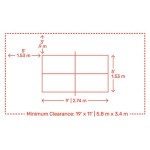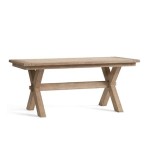Vegetable Garden Designs for Small Spaces
Growing your own vegetables even in small urban spaces is possible with some planning and creativity. Here are some essential aspects of vegetable garden designs specifically tailored for limited areas to help you maximize your space and enjoy the benefits of homegrown produce:
1. Space-Saving Techniques:
Vertical gardening is an excellent option for small spaces. Use trellises, hanging baskets, or wall-mounted planters to grow vegetables like tomatoes, cucumbers, and beans vertically. Raised beds also provide extra height and can be customized to fit any size area.
2. Companion Planting:
Companion planting is a time-tested technique that involves planting mutually beneficial species together. For example, planting basil next to tomatoes can improve tomato growth and deter insects. Combining compatible vegetables allows for more efficient use of space and enhances plant health.
3. Succession Planting:
Succession planting involves planting different vegetable varieties in the same space over time. As one crop matures, another is planted in its place. This technique maximizes space utilization and ensures a continuous supply of fresh produce.
4. Intercropping:
Intercropping involves planting different vegetable species in the same bed simultaneously. For instance, planting lettuce between rows of taller vegetables like tomatoes or peppers allows for more efficient use of space and the utilization of different vertical levels.
5. Container Gardening:
Container gardening is ideal for small balconies or patios. Choose containers of various sizes and depths to accommodate different vegetables. Pots can be easily moved around to optimize sunlight exposure and make the most of available space.
6. Trellising and Supports:
Trellising and supports are essential for maximizing vertical space. Use trellises or stakes to support climbing vegetables like beans, peas, and cucumbers, allowing them to grow vertically without taking up excessive ground space.
7. Choose Space-Saving Varieties:
When selecting vegetables, opt for compact or dwarf varieties that are specifically bred for small spaces. These varieties take up less room while still providing a bountiful harvest.
8. Vertical Structures:
Utilize vertical structures like fences, walls, or arbors to support climbing plants. This not only saves ground space but also creates an aesthetically pleasing vertical garden feature.
9. Plan Carefully:
Planning is crucial for optimizing small garden spaces. Sketch out a design that includes all the desired elements, taking into account the sunlight exposure, companion planting, and succession planting strategies.
10. Enjoy the Benefits:
Growing vegetables in small spaces is a rewarding experience. Not only do you save space and enjoy fresh produce, but you also reduce your environmental footprint and contribute to a healthier lifestyle.

Small Vegetable Garden Ideas Gate

Small Vegetable Garden Ideas Gate

Small Vegetable Garden Ideas Tips Design

Small Vegetable Garden Ideas Gardener S Supply

Small Vegetable Garden Ideas Gate

Small Vegetable Garden Ideas Tips Design

35 Creative Container Vegetable Garden Ideas A Piece Of Rainbow

Diy Small Space Vegetable Garden Remodelista

Vegetable Garden Planners To Help You Grow All Year Round

Small Vegetable Garden Ideas Landscaping Network
Related Posts








